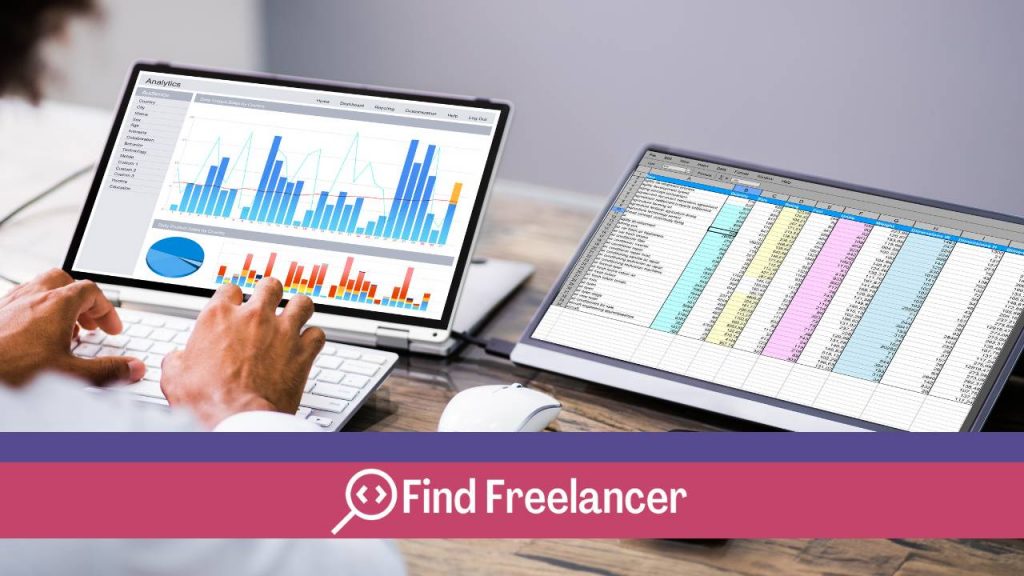Explore the world of Excel and discover how to create charts from tabular data. This article guides you through the process in a simple and effective way, suitable for beginners and initiates alike. Learn the essential steps to convert your tables into powerful visualizations, accentuating the visual impact of your data. Whether you’re a novice or a seasoned user, master the art of Excel charting with confidence, unleashing the visual potential of your data for impactful communication and in-depth analysis. Join us on this captivating journey towards dynamic and engaging data visualization.
How to choose the right chart:
When it’s about visualizing data on Excel, choosing the right type of chart is crucial.
What are the different types of Excel charts?
Excel offers a diverse range of charts, suitable for a variety of situations. Options include curves to represent changes over time, sectors ideal for comparing column values in percentages, and histograms, perfect for comparing values in several columns, such as monthly sales of different products.
How to align chart choices with specific data.
Aligning chart choices with specific data depends on the nature of the information to be represented. Curves are excellent for tracking time trends, sectors for highlighting percentages, and histograms for comparing values. Choosing the right graphic means understanding the context of the data and selecting the visual tool that effectively communicates the expected information.
What are the simple steps involved in creating a graph?
Creating a chart in Excel is an accessible task, and here’s how you can go about it.
How to select table cells?
Start by clicking on any cell in your table. This initial selection is the crucial first step in bringing your data to life.
What is the purpose of the “Insert” tab for choosing the type of chart?
Then head to the “Insertion” tab. This tab is your gateway to a variety of chart choices. Click here to choose the type of representation that best suits your data.
How to transform data into a visual representation.
Once you’ve explored the “Insert” tab, select the graph that corresponds to your objective. This simple action will instantly transform your tabular data into a visual representation, offering a clear and impactful overview of your information.
What are the tricks to an impactful graph?
The key to maximizing the impact of your Excel chart lies in a few simple but powerful tricks. Let’s find out how to make your visualization even more impactful.
How to add a dynamic title?
Start by clicking on the “Chart title” area. Then insert an equal sign in the formula bar and select the cell containing the general title of your chart. Confirm with the “Enter” key. This dynamic method ensures that your title evolves with your data, capturing the viewer’s attention.
How to move the chart to another sheet?
For maximum flexibility, right-click on the graphic, choose “Move graphic”, then opt for “New sheet”. Give your sheet a name in the box that appears. Keep in mind that even after moving, the link between chart and table persists.
How to customize the layout of elements
.
Under the “Graphic creation” tab, explore the “Quick layout” options. Choose the layout that best suits your needs. With just a few clicks, you can restructure the elements of your graphic for a more effective visual presentation. Experiment and find the layout that amplifies the message you want to convey.
What are our tips for getting the perfect chart on Excel?
In search of the perfect chart? Discover our practical tips for sublimating your visual representations of data.
Choose the right type of graphic
Opt for the chart type that best suits your data. Curves for time trends, sectors for percentage comparisons, and histograms for multi-column analysis.
Simplify your message
Avoid information overload. Focus on the essential message your graphic needs to convey. Simplicity promotes rapid comprehension.
Use meaningful colors
Choose colors that reinforce your message. Consistent hues improve legibility and guide the eye to key elements.
Add a clear, concise headline
A well-formulated title contextualizes your graphic. It must be clear, concise and captivating to grab the viewer’s attention at first glance.
Customize axes and labels
Make your axes and labels informative. Well-chosen labels provide essential details, facilitating overall understanding of the chart.
Maintain style consistency
Harmonize the style of your graphic for a professional presentation. Visual consistency contributes to a pleasant experience for the viewer.
Test on a target audience
Before publication, test your graphic on a representative sample. Feedback from the target audience will help you refine the clarity and visual impact of your creation.
Integrate these tips into your approach, and bring to life graphics that captivate, communicate effectively, and deliver undeniable visual impact.










